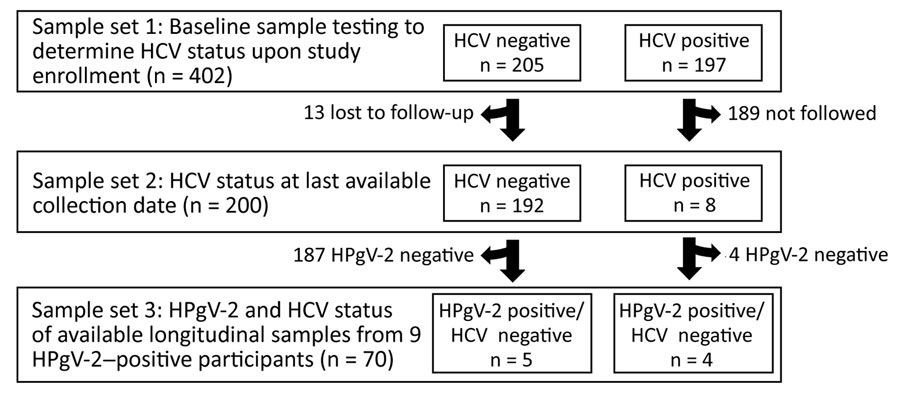Volume 26, Number 2—February 2020
Research
Chronic Human Pegivirus 2 without Hepatitis C Virus Co-infection
Figure

Figure. Design of study of chronic human pegivirus-2 and hepatitis C virus co-infection in injection drug users in the San Francisco Bay area, California, USA. Samples were tested using HPgV-2 molecular and serologic assays in 3 sample sets. HCV, hepatitis C virus; HPgV-2, human pegivirus 2.
Page created: January 17, 2020
Page updated: January 17, 2020
Page reviewed: January 17, 2020
The conclusions, findings, and opinions expressed by authors contributing to this journal do not necessarily reflect the official position of the U.S. Department of Health and Human Services, the Public Health Service, the Centers for Disease Control and Prevention, or the authors' affiliated institutions. Use of trade names is for identification only and does not imply endorsement by any of the groups named above.